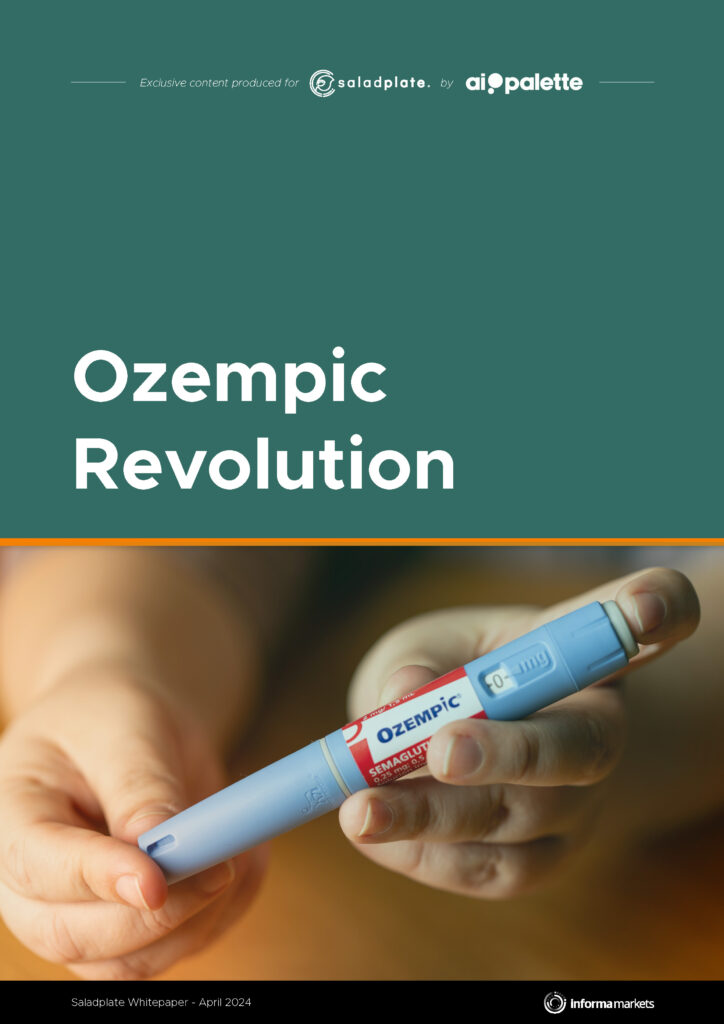Whitepapers
market insights and case studies from various segments
of the industry.
Whitepapers
market insights and case studies from various segments
of the industry.
FEATURED WHITEPAPERS
July 2023
APAC alternative proteins market rife with venture financing and M&A activity, opines GlobalData
Alternative proteins have made significant inroads in the Asia-Pacific over the last five years, spurred by rising consumer health concerns and increased manufacturer activity in the region.
Alternative proteins, particularly plant-based dairy and meat alternatives have made significant inroads in the Asia-Pacific (APAC) region since 2018. Additionally, the global meat supply chain disruptions and heightened fears of disease transmission through meat during the COVID-19 outbreak catalysed market growth. More consumers began experimenting with plant-based meat alternatives in 2020, thereby expanding the market base.
In this Whitepaper
• APAC dominates the global dairy alternatives drinks market
• APAC meat substitutes demand lags far behind Western markets
• Fluid competitive landscape with rising investments and M&A activity
• Regulatory policy changes and novel technologies to influence future market growth trajectory
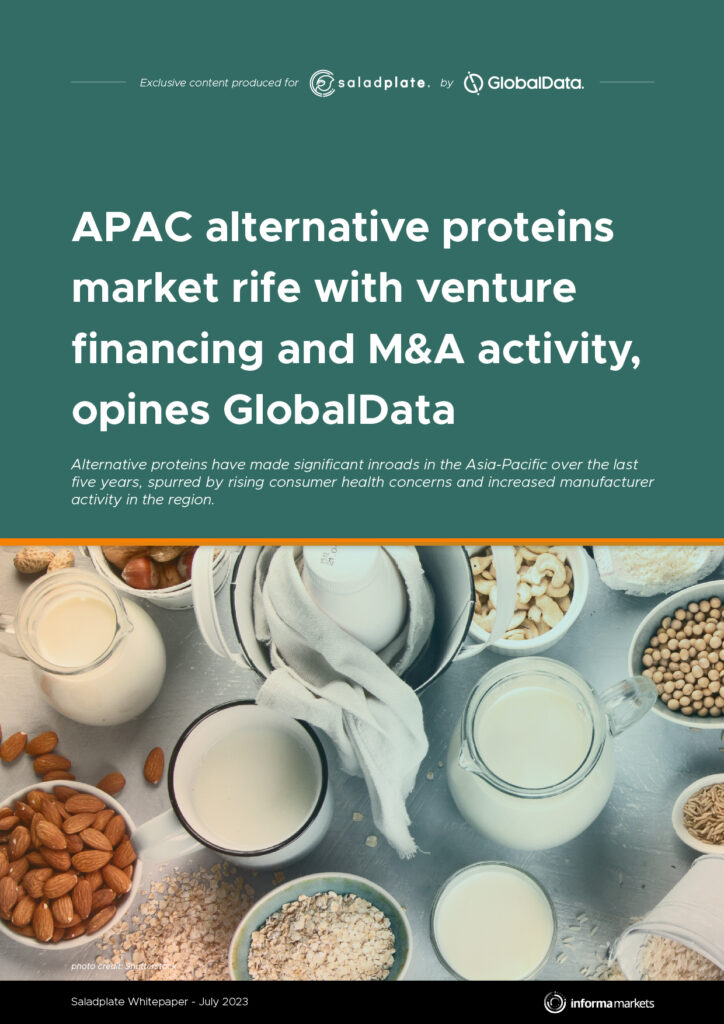
August 2023
Lab-grown food pivotal for food security in the Asia-Pacific, opines GlobalData
GlobalData examines the state of affairs and consumer attitudes towards lab-grown food in the Asia-Pacific
Plant-based protein alternatives have become the buzzword in the Asia-Pacific (APAC) food and beverage industry. In contrast, lab-grown food is a less heard-of concept. While plant-based alternatives are made with plant-derived ingredients, lab-grown food is produced from animal-derived cells or products. Cultivated meat, for instance, is made by culturing muscle, tissue, or skin cells extracted from live animals. The extracted cells are placed in a nutrient medium in bioreactors to stimulate cell multiplication. As the cells proliferate, they can be fashioned into the desired cuts of meat. Meat produced in this manner is also called cultured meat, cellular meat, invitro meat, clean meat, and cellular agriculture.
In this Whitepaper
• APAC dominates the global dairy alternatives drinks market
• APAC meat substitutes demand lags far behind Western markets
• Fluid competitive landscape with rising investments and M&A activity
• Regulatory policy changes and novel technologies to influence future market growth trajectory
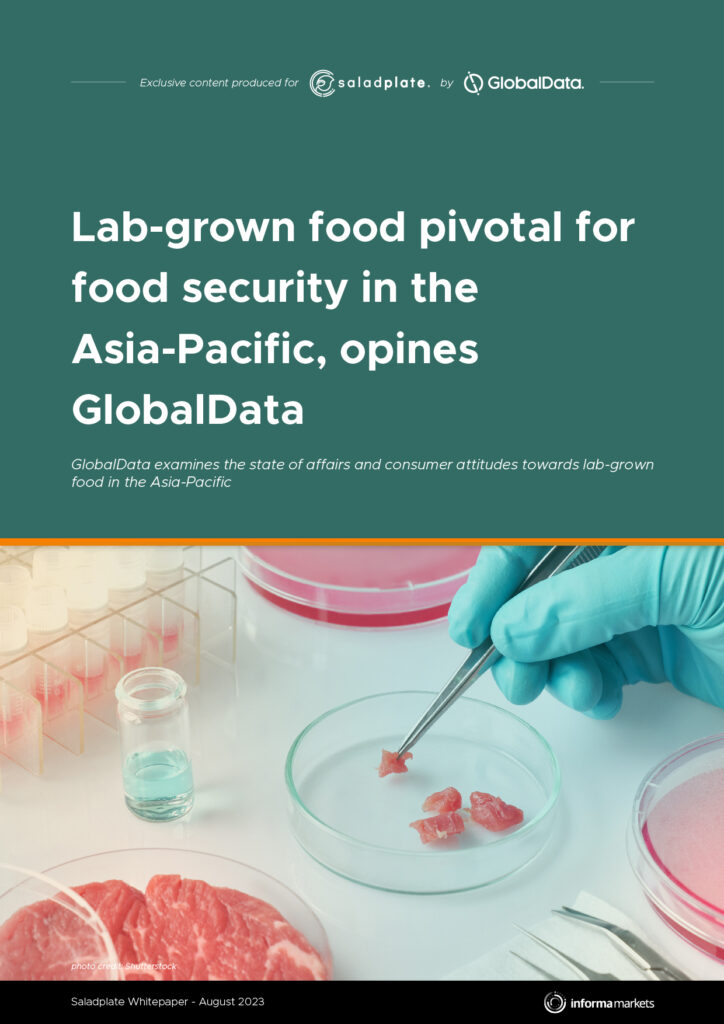
September 2023
Inflation is reshaping the out-of-home dining preferences of Asia-Pacific consumers
The easing of the stringent COVID-19 restrictions unleashed pent-up demand for out-of-home dining experiences in the Asia-Pacific (APAC) in 2021 and 2022. However, after the pandemic, inflation has emerged as the new disruptor, influencing how often, when, and where consumers dine out.
The COVID-19 outbreak in 2020 proved a bane for dine-in restaurant operators and a boon for food takeaway service providers. Amid the lockdowns, dine-in transaction volumes and value plunged in 2020, while takeaway transactions rose. However, the pent-up demand for dine-ins resurged as authorities began easing the pandemic control measures in 2021. Despite the prevailing social distancing and face mask mandates, consumers began flocking back to their favourite eateries in 2021. As a result, dine-in transactions began rebounding, while takeaway transactions decelerated.
In this Whitepaper
• APAC dominates the global dairy alternatives drinks market
• APAC meat substitutes demand lags far behind Western markets
• Fluid competitive landscape with rising investments and M&A activity
• Regulatory policy changes and novel technologies to influence future market growth trajectory
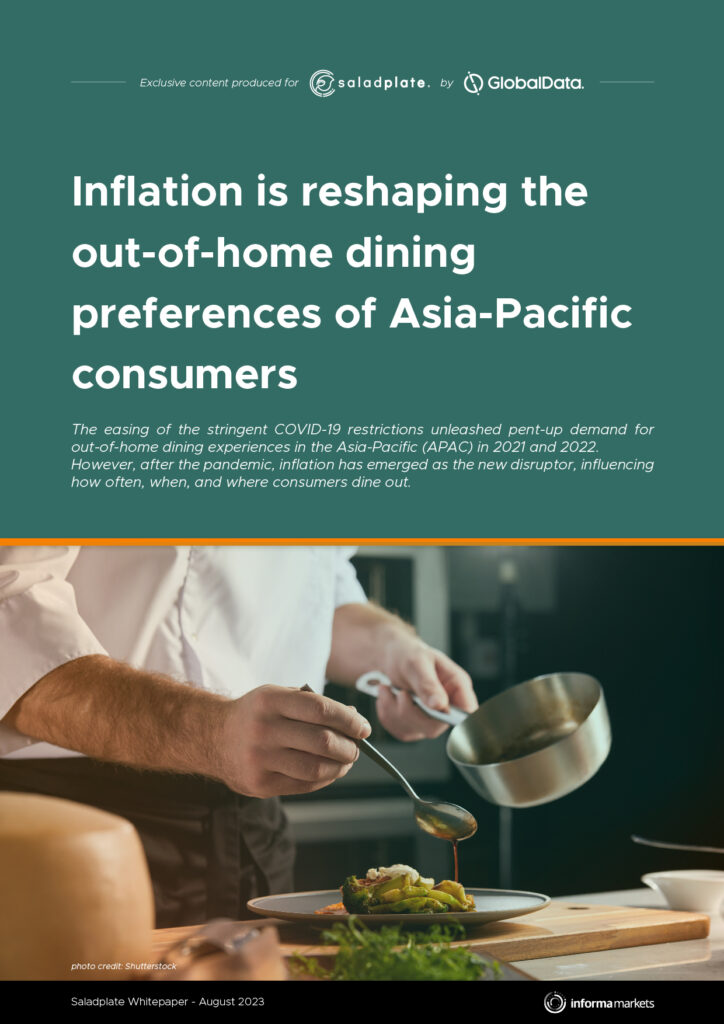
October 2023
Reclaiming Rest
The Rise of Sleep-Enhancing Products
The rise of sleep-enhancing products in the Consumer Packaged Goods (CPG) industry has led to a surge in demand for natural alternatives. The global sleep aids market size was valued at $59,815.10 million in 2020 and is projected to reach $111,920.10 million by 2030, with a CAGR of 6.9% from 2021 to 2030. This whitepaper delves into the burgeoning market of sleep-enhancing CPGs, exploring the sector’s current landscape, innovative product lines, regulatory considerations, sustainability commitments, and future trajectories in personalized solutions.
In this Whitepaper
• APAC dominates the global dairy alternatives drinks market
• APAC meat substitutes demand lags far behind Western markets
• Fluid competitive landscape with rising investments and M&A activity
• Regulatory policy changes and novel technologies to influence future market growth trajectory

October 2023
The coming of age of Indian whiskey
A far cry from the days when Indian whiskey was brushed aside as rum whiskey, premium single malts from India have gained high acclaim among whiskey experts and drinkers across the globe. With India being the largest whiskey market in the Asia-Pacific, the outlook for Indian whiskey is bright, says Bobby Verghese, Consumer Analyst at GlobalData.
For a long time, Indian whiskeys were monikered “rum whiskeys” as most domestic brands are blended malts made with spirits fermented with molasses, akin to rum. Moreover, owing to the hot weather, Indian whiskeys mature within a year, unlike Scotch whisky and Irish whiskey which take three years to mature. Many argue that this fast maturity affects the quality of the expression. Also, traditional Indian brands are often sold with low-age or no-age statements, undermining their perceived value among connoisseurs.
In this Whitepaper
• APAC dominates the global dairy alternatives drinks market
• APAC meat substitutes demand lags far behind Western markets
• Fluid competitive landscape with rising investments and M&A activity
• Regulatory policy changes and novel technologies to influence future market growth trajectory

January 2024
Opportunities rife for sports drinks makers in the Asia-Pacific
With Asia-Pacific emerging as the fastest growing region for sports drinks worldwide, beverage makers are vying to capture a slice of the lucrative market, says Bobby Verghese, Consumer Analyst at GlobalData.
Sports drinks, or isotonic, hypertonic, or hypotonic drinks, are functional beverages typically formulated to replenish electrolytes and energy lost through sweat or enhance endurance during exercise and other strenuous activities. Sports drinks brands, such as Japan’s Pocari Sweat, have become household names in the Asia-Pacific (APAC) region over the last two decades. After North America, APAC was the second-largest geographic regional market for sports drinks in volume and value sales* primarily due to the region’s large population and rising household incomes. Within the APAC market, the top four countries, namely China, Japan, India, and Indonesia, accounted for almost three-quarters of sports drinks volumes in 2022*.
In this Whitepaper
• APAC dominates the global dairy alternatives drinks market
• APAC meat substitutes demand lags far behind Western markets
• Fluid competitive landscape with rising investments and M&A activity
• Regulatory policy changes and novel technologies to influence future market growth trajectory
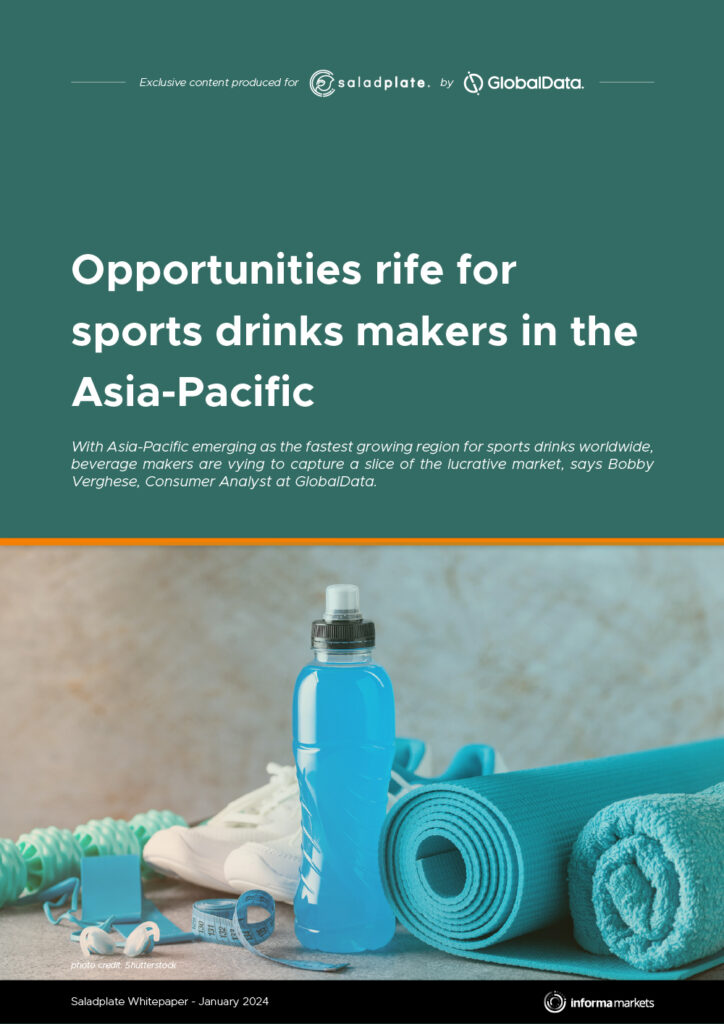
January 2024
Health & wellness emerges as a top priority for consumers when choosing food/drinks
The COVID-19 pandemic exacerbated the desire among consumers of all ages to approach health in a holistic and personalized manner, intensifying demand for prod- ucts that can help them lead a healthier lifestyle proactively, says Parthasaradhi Reddy, Lead Analyst, Consumer at GlobalData
Health & wellness has firmly held its position as the most influential mega-trend since 2020, prompted undoubtedly in part by the impact of the COVID-19 pandemic, which led to a renewed focus on health from various aspects starting with boosting immunity to preserving mental wellness. Continued monitoring of the relative importance of the health & wellness trend is useful in anticipating directional behaviour and meeting the demands of existing and future consumers.
In this Whitepaper
• APAC dominates the global dairy alternatives drinks market
• APAC meat substitutes demand lags far behind Western markets
• Fluid competitive landscape with rising investments and M&A activity
• Regulatory policy changes and novel technologies to influence future market growth trajectory
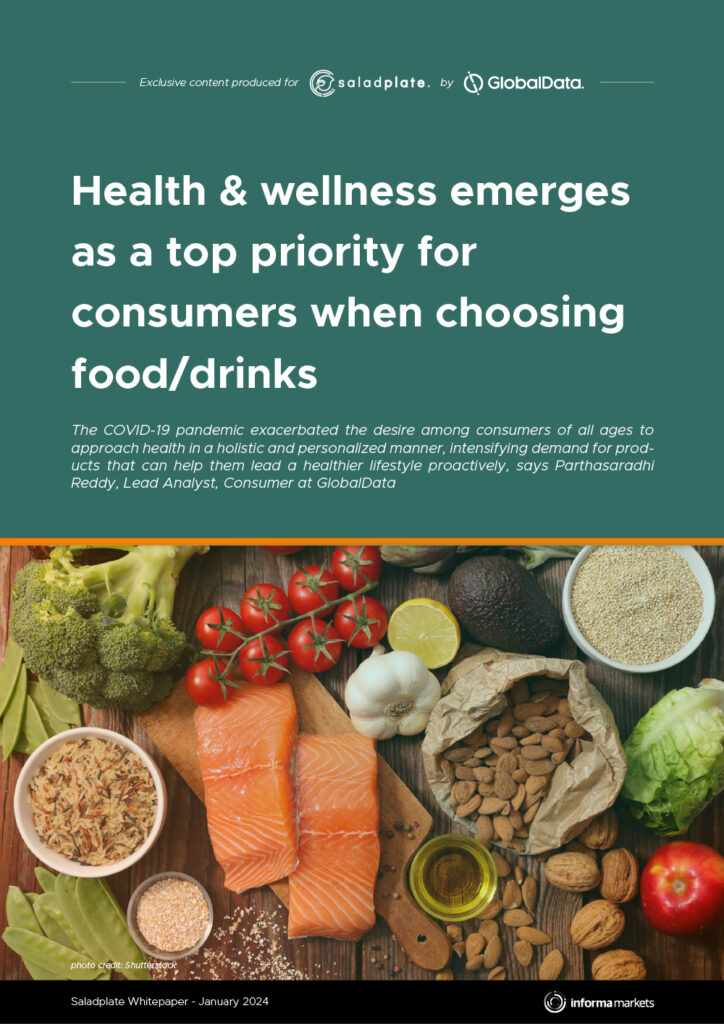
May 2024
Emerging Trends in Food & Beverages
In the fast-paced world of food and beverage, staying ahead of the curve can feel like chasing a runaway taco. New trends emerge seemingly overnight, leaving brands scrambling to keep up. How do you keep up with it?
Ai Palette sifts through a mountain of information, from sizzling TikTok trends to Google’s most search volumes to most searched recipes on YouTube , and everything in between. We source thousands of consumer conversations to understand the buzz behind the food. Remember the hot honey trend? We predicted it 2 years ago. And since then, almost every restaurant and FMCG company have capitalized on this.
In this Whitepaper
• APAC dominates the global dairy alternatives drinks market
• APAC meat substitutes demand lags far behind Western markets
• Fluid competitive landscape with rising investments and M&A activity
• Regulatory policy changes and novel technologies to influence future market growth trajectory
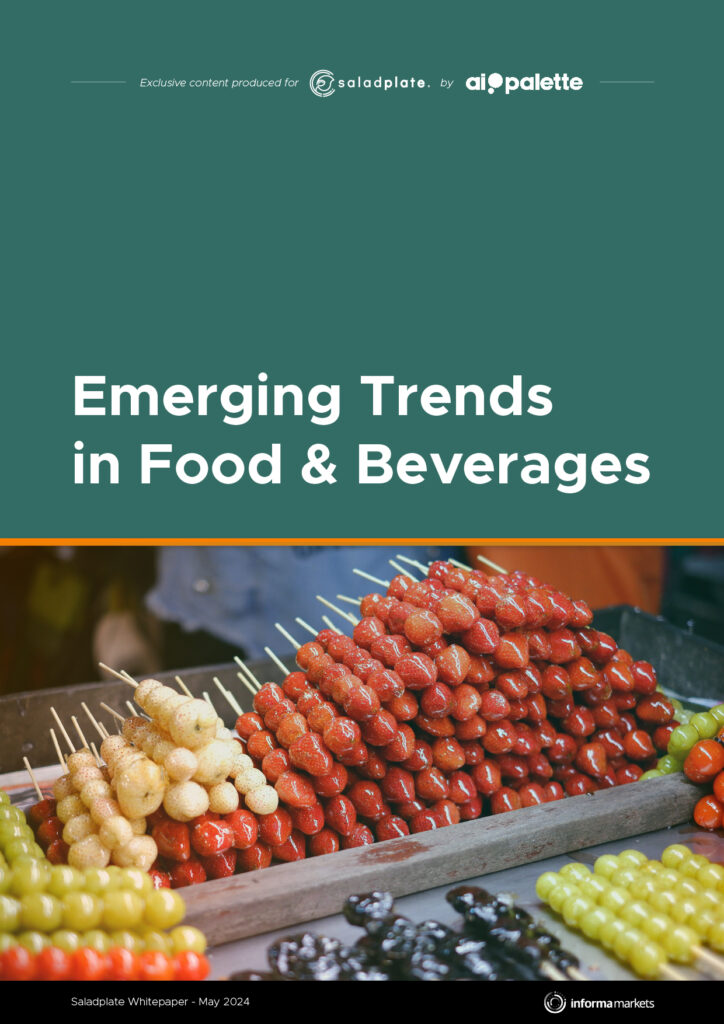
May 2024
Top Trends in Beauty & Personal Care
The whirlwind world of beauty and personal care is fast therefore keeping pace with the latest trends can feel like chasing a rogue rollerball mascara. New breakthroughs emerge seemingly daily, leaving brands scrambling to catch up. How do you stay ahead of the curve?
Enter our powerful analytics platform. We dig through a mountain of data, from sizzling social media trends like Tik Tok to top Google searches for beauty solutions. We analyze countless consumer conversations to understand what’s truly buzzing in the beauty world.
In this Whitepaper
• APAC dominates the global dairy alternatives drinks market
• APAC meat substitutes demand lags far behind Western markets
• Fluid competitive landscape with rising investments and M&A activity
• Regulatory policy changes and novel technologies to influence future market growth trajectory

April 2024
Ozempic Revolution
This report offers a deep dive into the ozempic trend. We have used Ai Palette for collecting data that uses varied data sources- search, social media, restaurant menus, cuisine recipes and online shopping. This helped us provide meaningful patterns and provide key takeaways, offering a clear view of the prevailing and upcoming trends as evidenced by the data.
The global health landscape is witnessing a significant shift, largely driven by increasing consumer awareness and concern about weight management, obesity, and related health conditions like diabetes. This shift is notably reflected in the growing interest in GLP-1 (Glucagon-Like Peptide-1), a class of drugs originally developed for diabetes treatment. GLP-1 receptor agonists, such as semaglutide, have garnered attention not only for their effectiveness in blood sugar regulation but also for their impact on weight loss.
In this Whitepaper
• APAC dominates the global dairy alternatives drinks market
• APAC meat substitutes demand lags far behind Western markets
• Fluid competitive landscape with rising investments and M&A activity
• Regulatory policy changes and novel technologies to influence future market growth trajectory
